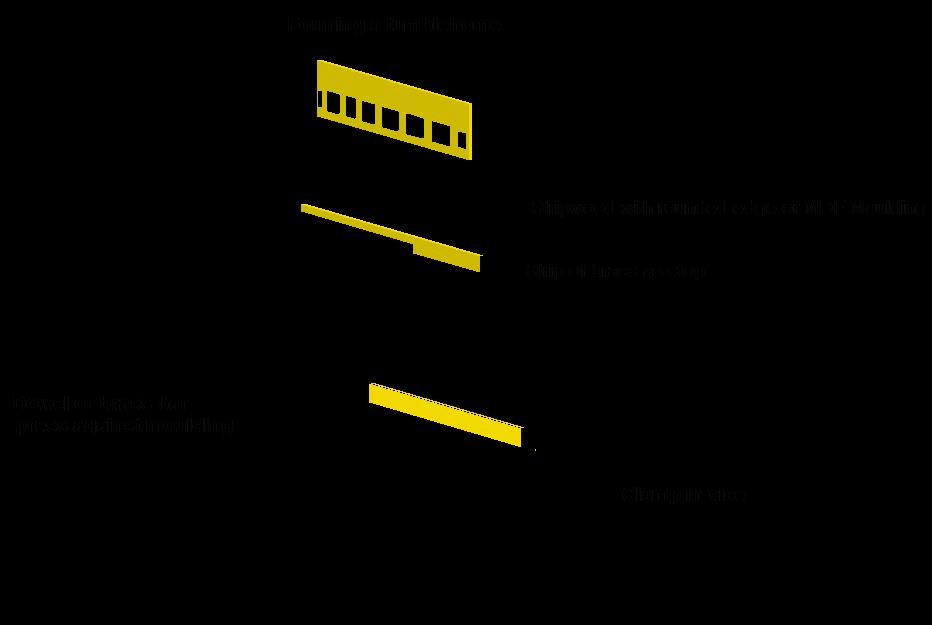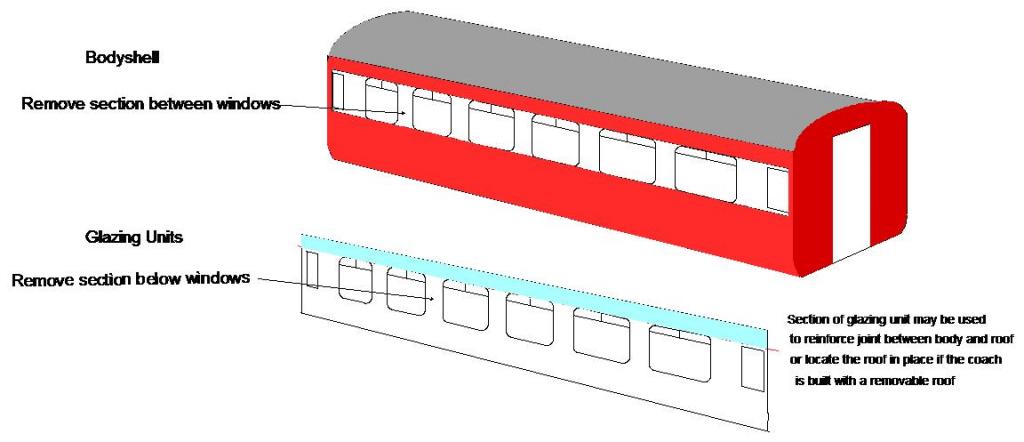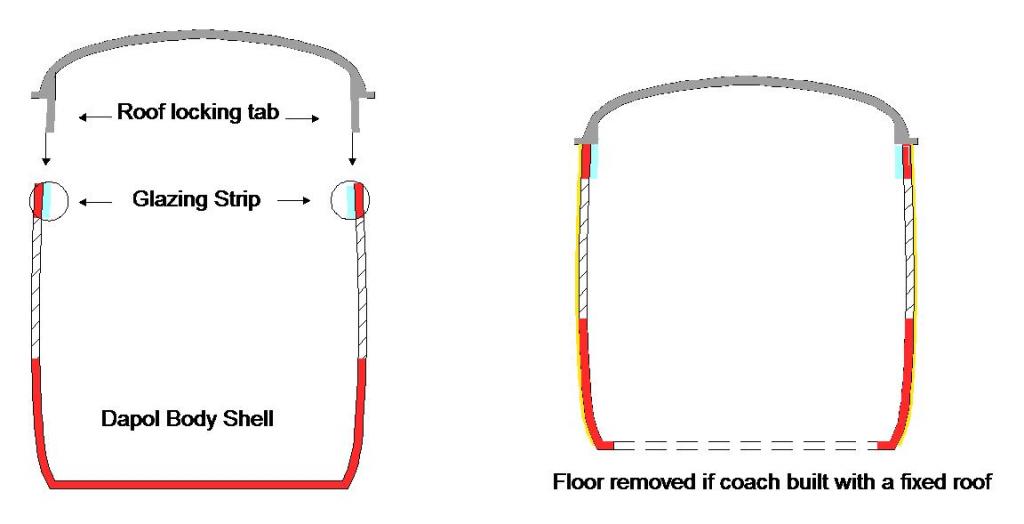-
Posts
4,868 -
Joined
-
Last visited
-
Days Won
119
Content Type
Profiles
Forums
Events
Gallery
Blogs
Store
Community Map
Everything posted by Mayner
-
Great to see you taking the initiative to build these locos rather than waiting for a rtr model to arrive. As you modelled B233 its only fitting that you fit it with a Maybach Sound unit same as used in the Western Region Warships and some DB 200 Class locos:)
-
I will confirm costs once I am in a position to confirm quantities with the supplier. Coach sides were originally priced at $31.00 NZ with the exception of the BSGV at $53.00 NZ when introduced in 2015 and may be subject to currency variation between Stirling & the NZ$ as the engraver is in the UK. Prices do not include Irish or UK Vat or US State sales taxes as exports are exempt. I have cleared out the in box.
-
There is an undated photo of a light green H Van hiding behind Sambo at Inchacore Works in Irish Railways in Colour a Second Glance" Tom Ferris 1995. Standard un-fitted H Vans 19358 & 19613 are clearly visible in the background in all over mid grey scheme. As far as I recall the 1st batch of fitted H Vans were painted green to run in passenger trains. Apart from P&T some vans were allocated to specific traffic flows including Lamb Bros fruit traffic from Donabate to Amiens Street.
-
My TPOs are nearly as scarce as the prototype. I should be able to sort you out with one once I have re-jigged the castings in brass
-
Studio Scale Models may be able to help dzsullivan@eircom.net . They produced an etch for the single lever brake gear used by the GNR, and most Irish railways
-
Nice job Noel, you seem to be taking to painting and lining like a duck to water. The "dipped orange" scheme was a classic as the As & Cs were re-motored while the Crossley enginned locos soldiered on in a mainly black scheme with white chevrons above the cabs and sometimes a small yellow warning panel.
-
More large scale stuff, working in the larger scales seems to take almost as long as working on a 12" -1' railway or maybe I am slowing down. Despite the garden railway operating reliably for nearly 10 years some major issues cropped up as I converted from LGB/Bachmann Big-Haulier to more accurate 1:20.3 American 3' gauge locos and rolling stock. This arose mainly as a result of a combination of longer larger freight cars and locos with body mounted couplers and finer profile wheels on some older Accucraft freight cars bought on e-bay. Basically freight cars and loco tenders turning over & de-railed while running through crossovers laid with LGB 3rd radius points in the storage yard in the garden shed, while the finer profile wheels tended to split the points if the blade was not tight up against the stock rails. Luckily stock ran smoothly through the Sunset Valley No4 and No6 points and crossovers used on the main line. Once I understood the problem I replaced part of the point ladder in the storage yard with No4 points while leaving a pair of LGB points in place as a temporary connection to a loco spur pending the arrival of more points from the States. Before LGB points used in crossover between No 3 & 4 Roads temporary infilling piece between No 2 & 3 Road. Trains could run through this at low speed, but tended to de-rail on the frogs and split the points. After crossover re-laid with Sunset Valley No 4 points The yard is laid with heavier rail than the points transition clamps are used to join the tow rail profiles. The spur on the right leads to a function turntable and loco yard at right angles to the main yard. I may convert these points to remote pneumatic operation at some stage. The problem with locos and cars splitting the points on the main line was due to the older Sunset Valley switch-stands having insufficient throw to ensure that the point blades were pushed tight up against the switch stands. More recent switch stands are fitted with a grub screw to adjust the throw. I modified 8 switch stands over a weekend using a Unimat SL set up as a milling and boring machine. Before fitting the adjusting screw it was necessary to mill the end off the switch stand throw bar, then bore out and tap the remaining stub. Sunset valley supplied an imperial tap and enough adjusting screws to complete the converstion. Before mixture of unmodified and modified switch stands Switch stand set up in milling machine Converted switch stand with adjusting screw I installed and tested the modified switch-stands over the Easter Weekend so hopefully this should open up more time to concentrate on Irish small scale stuff. We had a damp humid summer followed by the tail end of two cyclones in recent weeks and a breeding ground for mosquitos, the insect repellent just about made it bearable.
-
I am planning to release a second batch of CIE coach sides in September. 1339-55 Corridor Standard 1356-71 Standard Open 1904-8 Brake Standard Open 2405-2418 Buffet Car 3201-3212 BSSGV Please PM me by 30 June if you are interested so I can confirm quantity and cost.
-
Kieran No need for GSR grey!!! The NCC and possibly the GNR operated some double frame locos into the 1930s The NCC double frame 2-4-0s appear to have ended up in LMS Crimson Lake. The Ulster Railway seems to have preferred outside framed locos and may have contributed some 0-6-0s to the GNR I have a photo some where
-
I came across a pair of part built T2s at a swapmeet in the UK about 20 years ago. Both were built to 21mm gauge to S4 standards and were non-runners. I re-gauged the locos to OO and passed the locos on to the MRSI Dundalk Works group. On of the locos was finished in plain matt black not unlike the loco in the "before" photo. Mechanically the locos were quite different one was an early version of the kit with the MK1 brass chassis which was basically an 0-6-0 with the leading bogie pivoted directly off the body. The second had the stronger nickel silver MK2 chassis which was a more conventional 4-4-2 chassis with the bogie and pony truck pivoted to the chassis. The MK2 chassis was available separately and advertised as suitable for a U Class 4-4-0. Both locos had Anchorage DS10 open frame motors flywheels and Branch Lines 2 stage reduction boxes which gave excellent low speed torque and a reasonably slow top speed, but had different gear ratios so could not speed match Both took a bit of subterfuge to convert to OO and get to run round 2' radius curves.
-
There is no drop-in chassis as such for the A or C Class, Patrick's and Eoin's idea of a false floor & Tensodo Spud or Black Beetle motor bogie or preferably motor bogies is probably the simplest and most effective option particularly if you want a detailed interior. Personally I would go for a Blackbeetle with the 28:1 gearing option rather than a standard Spud or Blackbeetle to avoid jack rabbit starting and supersonic top speed. While the original Cs had a pretty bad reputation they seem to have been capable of hauling quite heavy goods & mixed trains on the West Cork main line and Valencia line.
-
Best wishes and get well soon Seamus
-
Nice work with the buildings they really capture the atmosphere of the West Cork. Good to hear that you have some of your stash of Floquil "black", I had grey car spray paint mixed to match an LGB diesel at a local paint supplier.
-
N gauge appears to be a very under-rated scale by Irish Modellers. I turned to N in the late 70s out of frustration trying to build a OO gauge layout in a 10X6 box-room and my limited kitbashing/scratchbuilding ability at the time. Turning to N gave me the ability to build a more realistic railway than I could fit in to a similar space in OO, locos and stock became secondary to operation, structures, buildings and scenery. I built a point to point shelf layout along 3 walls of an 11X11 bedroom, with a medium size terminus station, and a small intermediate station junction for a goods only branch. The railway has an operating sequence similar to the Sligo or Mayo Line with passenger, mail, liner and loose coupled goods trains loading up to 6-7 coaches or 15 wagons, something I have never been able to achieve in OO let alone 21mm gauge. I was content enough to run re-painted rtr BR stock for several years before I got around to kitbashing Atlas SW1500 switchers into B121 & 141 diesels. I became hooked on American N in the late 80s with the new generation of Atlas & Kato diesels and highly detailed Microtrains freight cars. The American N scale has been in a hiatus for the last 10 years as it competes for time and space with other modelling projects although I could say that about my Irish modelling projects. American and Continental N is built to the correct scale of 1:160 for standard gauge and does not have the narrow gauge look of the British 1:148 stock.
-

How do you fit brass coach sides to roof without gaps?
Mayner replied to Noel's question in Questions & Answers
Noel Send me a PM with your e-mail address and I will send you a set of instructions. For some reason the tumblehome sketch is not uploading correctly -

How do you fit brass coach sides to roof without gaps?
Mayner replied to Noel's question in Questions & Answers
"Converting RTR coaches with Comet sides" on the downloads section of http://www.cometmodels.co.uk/ gives more information on fitting brass sides to RTR coaches. Worsley Works has "shortened" sides for some modern GNR & NCC/UTA coaches to fit RTR bodies. -
Tony I think Omagh North is an excellent self contained shunting layout that's capable of expansion either into a larger layout if you get the space or adding fiddle yards at one or both ends. Introducing a wagon sorting system http://www.wymann.info/ShuntingPuzzles/Inglenook/inglenook-trackplan.html should make things more interesting. I would imagine a lot of shunting took place on the running roads and the yard neck in the days before the Enniskillen Line closed with cattle traffic off the SLNCR for Derry & Belfast ports and bagged cement from Drogheda to Sligo via Omagh and Enniskillen. Some of us do tend to loose interest once the track is laid, I started a quickie Irish Narrow gauge layout 14 years ago and its still not finished or operates very well but it looks pretty.
-
One option would be to try a "cassette" long enough for turning/storing a loco or a few wagons at each end rather than a turntable and stub sidings. Cassettes are usually fabricated from ply and aluminium angle. You could use the footbridge as a view blocker for trains arriving from Enniskillen or Portadown http://www.rmweb.co.uk/community/index.php?/topic/11899-fiddle-yard-cassettes/
-
Little package arrived from the UK yesterday, I have found a couple of potential casters in Auckland, so a late 2017 release looks feasible.
-
There are colour photos of 6T on the C&L in both the Irish Railways colour albums by Tom Ferris. The loco was overhauled and re-painted in 1956 before she was transferred to the C&L. One of the photos is of the recently overhauled loco taking water at Drumshanbo in which one of the side tanks looks suspiciously like black while the smokebox, tank fronts and dome have a greyish tinge. Whether this was an effect of sunlight reflected on the side of the tank and the effect of heat, smoke and ash dulling the paint on the boiler fittings and smokebox is another question. The overhaul included red buffer beams & nice large yellow numerals on the tank sides, but not to a shaded numeral on the buffer beam instead 6T was chalked on the buffer beam. I attempted to model 3T & 6T as they ran on the C&L in the late 50s 3T weathered grey (Railmatch Dirty Black) & 6T in Halfords satin black
-
The Hornby model is based on the BR Vanwide pallet wagons the last design of short wheelbase BR vans. CIE had nothing remotely similar http://paulbartlett.zenfolio.com/brvanwide The model was originally introduce by Triang-Hornby in the 70s with working sliding doors.
-
Sorry for hi-jacking the tread Rich, I tried building the coaches with a removable roof and with a removable floor and found it easier in the end to build the coaches with a removable underframe and floor. I 1st glue the roof to the sides before cutting out the slots in the sides and floor and fit the interior from below, I leave a ledge of plastic at each end so that I can screw the body to the underframe. I glaze the windows with clear styrene fixed in place with double sided tape
-
There is a big push by the car makers and the electricity companies towards electric cars. Truck builders are developing hybrid distributed electro-diesel power units for B Trains and Road Trains. Some bright spark suggested consolidating road freight into longer road trains at freight hubs and stringing overhead along the motorways and State Highways while at the same time claiming the days of the railway are past Our local MP ridiculed an opposition proposal to introduce a commuter rail service from Hamilton (160,000 pop) into Auckland (1.5m+) and secured $1B for a motorway on the basis that we will all be driving electric self driving cars within 10 years. This doesn't solve the problem of congestion when you get near any big city.
-
MK2 & MK3 coaches had a cabinet at one end with either a vacuum or air pressure gauge so the guard or shunter could carry out the brake test. \ There was also a rule allowing up to 5 coaches to be marshalled behind the van, this mainly applied to branch and suburban trains. Typical 4-5 coaches and a van on the Connolly-Drogheda or Connolly-Arklow suburban trains or one or two coaches and a van on branch line services out of Limerick to Ballina, Ballbrophy or Rosslare
-

Narrow Gauge in the Rockies not quite
Mayner replied to Mayner's topic in US / Canadian Railway Modelling
Sometimes I run the train when I get home in the evening after work. Last night I suddenly realised the train was still out in the garden and it was getting dark:rolleyes:
.png.c363cdf5c3fb7955cd92a55eb6dbbae0.png)

.jpg.eac93ea9569dbb7ef2659a1d1dc25769.jpg)
.jpg.78cd0f5de70105f03fe52fb7aa687715.jpg)
.jpg.6e81eb5b3c28eb4a00584fb669841476.jpg)
.jpg.aeec3c96be16cb0b7d82c0fb1f8ba32f.jpg)
.jpg.6be73c96659aad87131fad225167e2f4.jpg)





